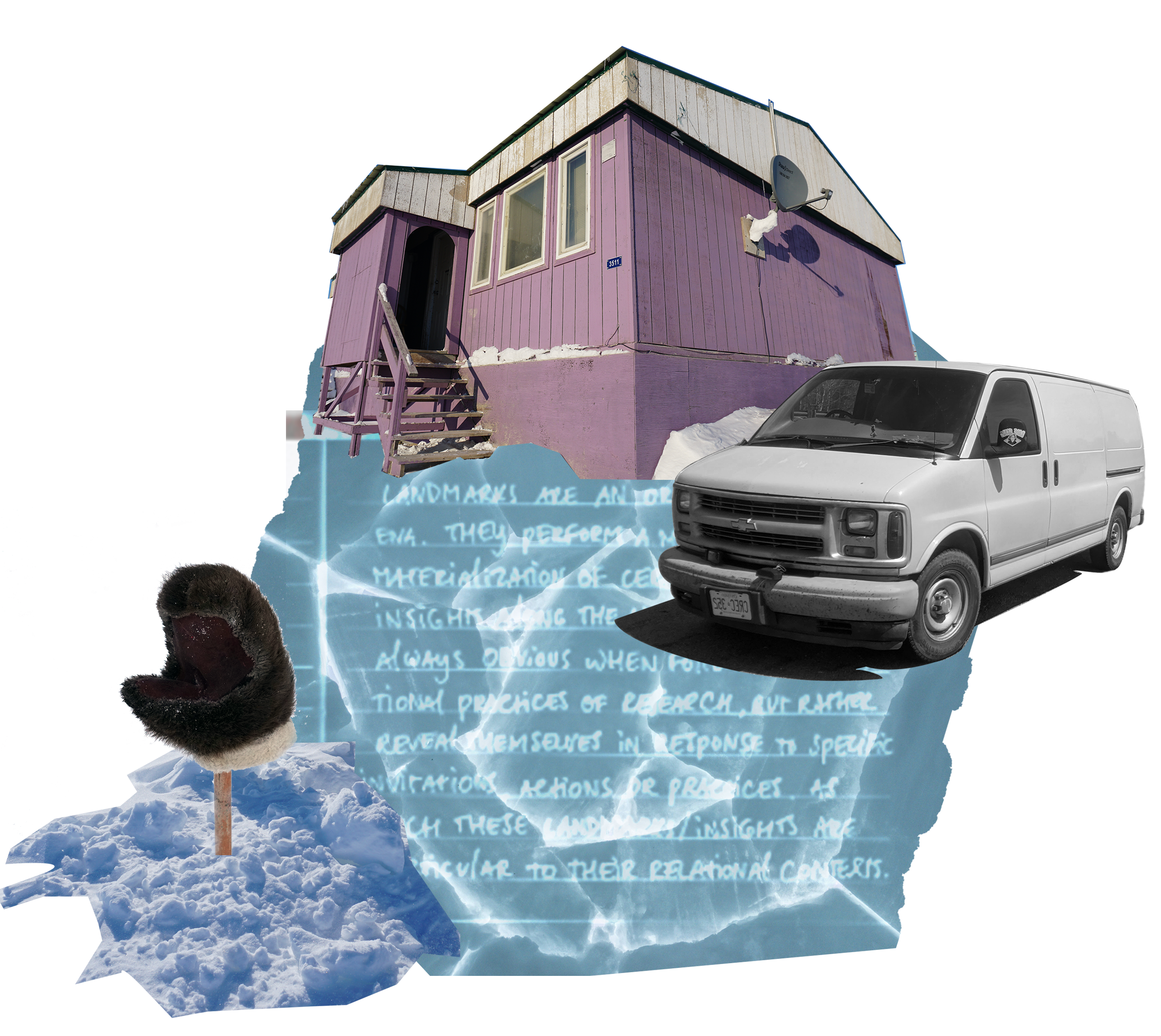The Wreck-site: Difference between revisions
No edit summary |
No edit summary |
||
| Line 1: | Line 1: | ||
[[File:Landmark.png|thumb]] | [[File:Landmark.png|thumb]] | ||
The Wrecksite as a figuration to think with emerges from the existing wrecks of HMS Terror and Erebus, in the vicinity of Gjoa Haven: material traces of long-standing Inuit-Qablunaat (non-Inuit) encounters. | |||
These sites are not static ruins but shifting spaces where history, knowledge, and materiality intertwine. | These sites are not static ruins but shifting spaces where history, knowledge, and materiality intertwine. | ||
Revision as of 11:21, 4 March 2025

The Wrecksite as a figuration to think with emerges from the existing wrecks of HMS Terror and Erebus, in the vicinity of Gjoa Haven: material traces of long-standing Inuit-Qablunaat (non-Inuit) encounters.
These sites are not static ruins but shifting spaces where history, knowledge, and materiality intertwine.
Research as a wreck-site is not just about what is uncovered, but how research itself becomes a contested space, claimed, studied, and sometimes fought over. Shaped by seasonal forces as shifting ice and weather limit access, altering what can be seen, gathered, or known, it also becomes a foundations for new growth.
My research is both a site of "becoming reef," opening new relational possibilities, as it is part of becoming research "heritage"- shaped by layered histories and ongoing transformation.
